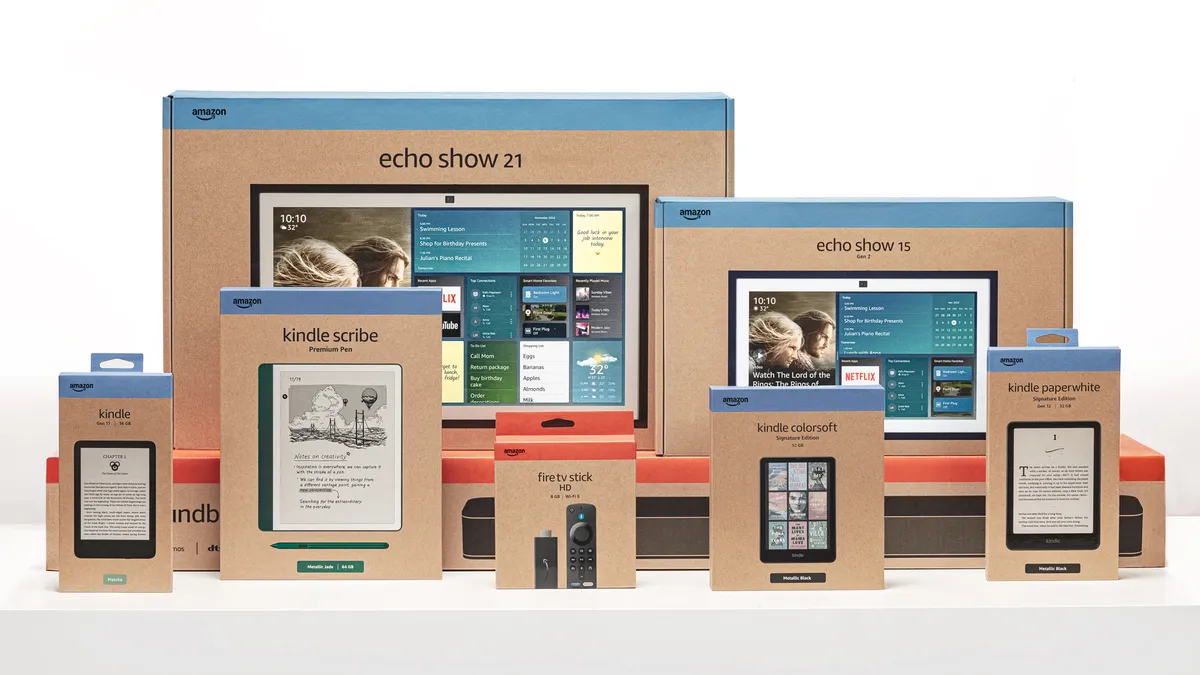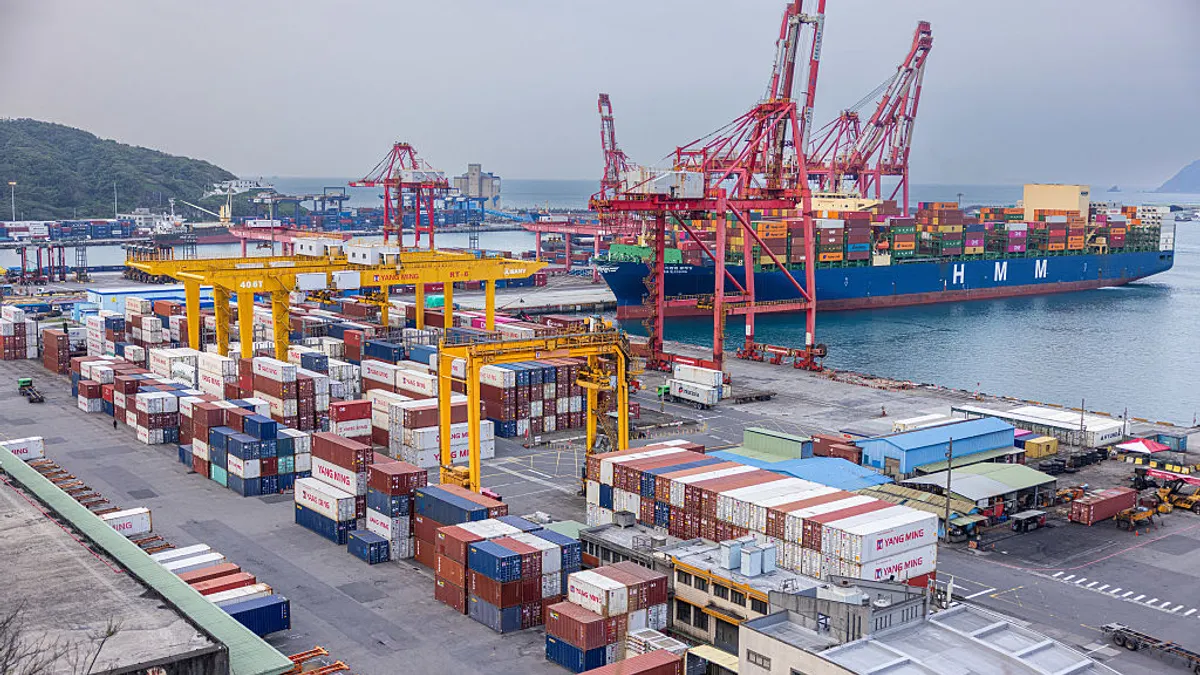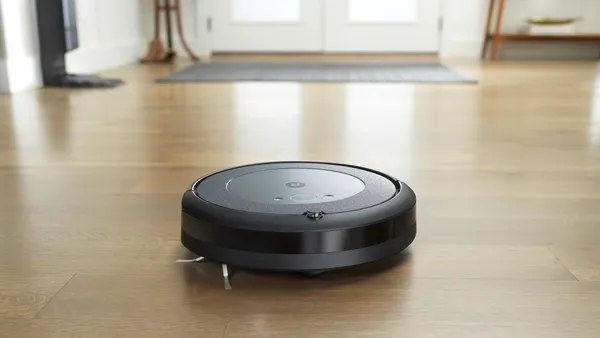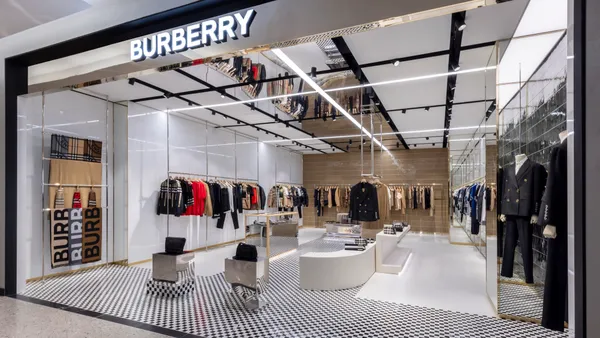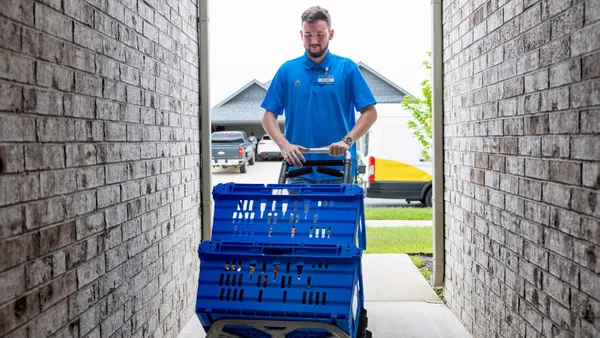Dive Brief:
- Amazon is revealing new details about the redesigned packaging for its electronic devices that it began rolling out in October, touting the new box design as 100% recyclable.
- The redesigned packaging for Echo, Kindle and Fire TV products uses an average of 30% more recycled content and 60% less ink than the previous design, the online retailer said in a post on Dec. 18.
- New boxes also feature a tactile-marked QR code so consumers with visual impairments can easily find and scan it. The code takes the user to resources such as additional product information, a setup guide and troubleshooting tips.
Dive Insight:
Amazon introduced the new packaging when it launched a new line of Kindle devices in October. The company also detailed other changes it has made to device packaging in recent years, such as removing plastic bags inside and outside the box.
“Originally, we used outer plastic wraps and laminations to properly protect the box from damage when it was shipped, which we’ve replaced with water-based coating that keeps that box safe and undamaged,” said Maiken Moeller-Hansen, director of device sustainability at Amazon.
In addition to using less ink, the outer boxes look different because they are not bleached. The brown kraft look also allows more postconsumer recycled content to be incorporated.
Amazon had aimed to make 100% of its device packaging recyclable by last year. It did not achieve that, but it reached 90% recyclable packaging, up from 79% in 2022, according to the 2023 sustainability report it released in July.
For its broader delivery packaging, the e-commerce giant announced that as of October it had eliminated plastic air pillows and transitioned to 100% recycled paper filler. Amazon says it has reduced its average per-shipment packaging weight by 43% since 2015.
Other electronic device suppliers also have made changes to their packaging to improve sustainability. Lenovo described in the ESG report it released this summer how it upped the amount of bamboo and sugar cane fibers in its packaging as a substitute material for plastic.
Google announced in August that it had achieved a 2025 goal early: to make all of the packaging for its newly launched hardware — including Pixel, Fitbit and Nest devices — without plastic. It also described using a new paper that it developed in partnership with Veritiv and Shandong Kaili Specialty Paper Co.; it’s three times stronger and 70% more stretchable than the paper it previously used.
Plus, Sealed Air revealed that it had added more recycled content to electronics retailer Best Buy’s packaging for e-commerce orders.



